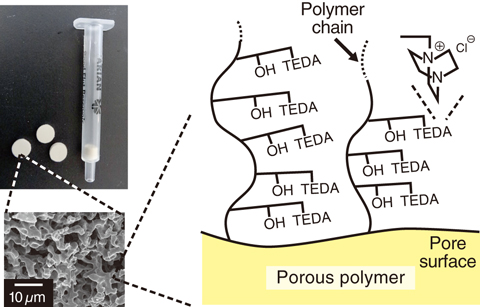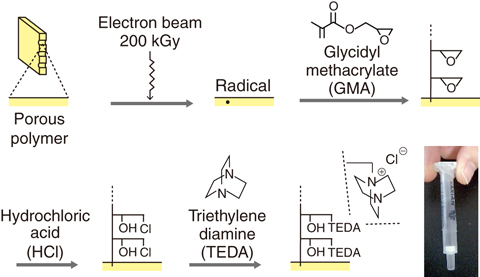
Fig.4-14 Schematic interfacial structure of a micro-volume cartridge (TEDA cartridge)

Fig.4-15 Preparation of the TEDA cartridge by electron-beam-induced graft polymerization
Table 4-1 Comparison of separation performances between the TEDA cartridge and conventional adsorbent

Radionuclides are commonly determined with radiometry and mass spectrometry. For γ-emitting nuclides, the activities can be measured without any pretreatments owing to strong penetration ability. In contrast, the measurements of α and β-emitting nuclides are associated with pretreatments comprising mostly chemical separations to remove concomitants that may cause interference of the energy spectra. Mass spectrometry, which identifies the mass number of an analyte rather than its radiation energy, also requires separation of isobars and molecular ions with the same mass number. Thus, simplifying such cumbersome and time-consuming separation procedures can be an effective approach to reducing operation time and workload.
Our study has focused upon facilitating the separation procedures by preparing a micro-volume solid-phase extraction cartridge that achieves rapid separation. A disk-shaped, highly-permeable microporous polymer (average pore diameter: 1.0 μm) with a diameter and thickness of 5.9 and 3.0 mm, respectively, is packed inside the cartridge. Triethylenediamine (TEDA), which has two anion-exchange groups per molecule, is uniformly present on the pore-surface of the polymer, forming a high-density ion-exchange-interfacial phase (Fig.4-14). This ideal structure for rapid separation can be realized by the electron-beam-induced graft-polymerization technique (Fig.4-15).
The separation performances of the prepared (TEDA) cartridge were evaluated using a spent nuclear-fuel sample. 237Np, one of the difficult-to-measure long-lived nuclides generated through nuclear reactions, was selected as an analyte. The separation performances of the TEDA cartridge were compared with a conventional chromatography column with a commercially available anion-exchange resin (Table 4-1). The TEDA cartridge could maintain comparable or higher separation performances than those of the conventional column when solutions were fed up to 10 times faster than a typical flow rate for the use of the anion-exchange resin, thus demonstrating that the TEDA cartridge significantly reduced the separation time.
The technique employed for the preparation of the TEDA cartridge is applicable to various molecules that have specific-adsorption ability. Optimal combinations of a molecule to be bound and a base polymer for grafting will provide the capability to meet a wide range of analytical needs.